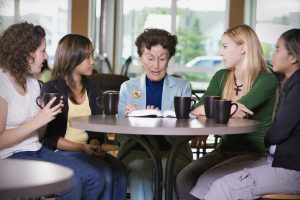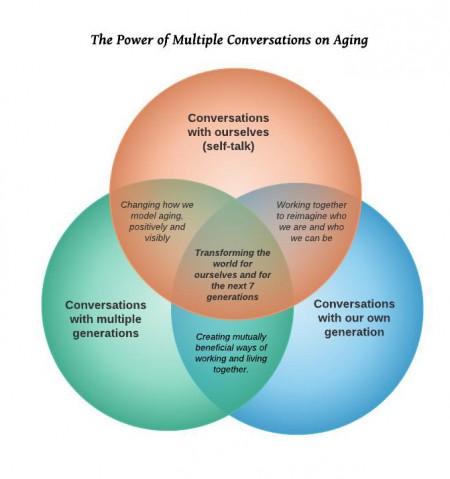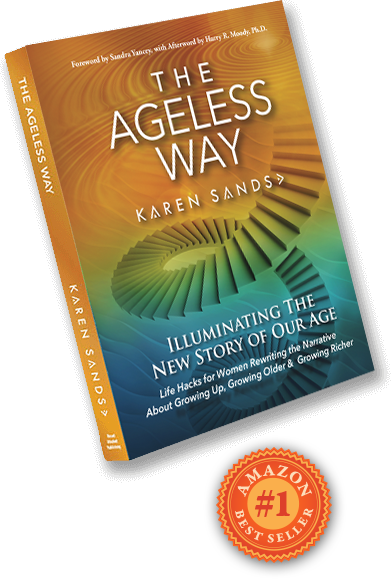For Throwback Thursday (TBT) I wanted to reshare this post I did back in the Summer of 2012 about the Power of Having Multiple Conversations on Aging.

I read an article (Tori Vigil’s “Thank God for Aging”) that put beautifully why aging is in many ways a positive part of life. What struck me most, though, is that the author is in her 30s.
One of my most important missions in my work and in my life is to change the conversation around aging. Too often, though, the conversation is assumed to be important only to people over 40 (and even then, only to those who choose to think about the topic in our age-denial society). It’s easy to forget that a transformation of how we view aging—indeed, in how we age, period—can only occur if our conversations on the topic are multigenerational. In fact, the only way we can transform the world, for ourselves and for the next seven generations, is if we recognize the need for multiple overlapping conversations.
For many of us, the way we talk to ourselves about what it means to age is the starting point for change. To look ahead and see opportunity instead of a life winding down; to see beauty in its complicated, rich nuance instead of only as a superficial societal judgment; to adjust to the present and future changes in our lives, our bodies, our energy, our work with an eye toward making the next stage our most visionary yet . . . these are just a few of the steps we need to take within ourselves so that we can embody them to others. Through this conversation, we can engage with younger generations in ways that model and mentor the ripe possibilities they too have ahead of them. As Tori Vigil put it,
Age is beauty. It is beautiful to see a strong woman like my mother, not afraid to have white hair. It is beautiful to see a smart woman, like my aunt, not afraid to let people know that she has brains. It is beautiful to see the older generation mentoring the younger generation. It is beautiful to see the younger generation seeking advice from their elders. It is beautiful to see young women using their minds instead of their bodies to achieve success. It is beautiful to see fathers teaching their sons how to respect women. It is beautiful to see grandparents loving their grandchildren.
Changing the conversation we have with ourselves also informs the conversations about aging that we have with others in our generation, the ones who are at the same tipping point in their lives, wanting a present and a future that’s different from what generations before us have modeled—invisibility, irrelevance, a winding down from participation in the world around us—in work, in our communities, in the world. The more we change how we see ourselves, the more we can band together with others in the same boat and row ourselves to a new shore, a new future, immigrants to a new land, where the older we are, the more we have to offer, the closer we are to realizing our greatest vision yet.
But we can’t people this land with only one or two generations. The conversation about aging needs to move beyond self-talk and beyond the lips of those going through the same stage of life. It needs to go beyond simply modeling what it’s like to be a strong, visionary leader in our 50s, 60s, 70s, and beyond. All generations need to work together to find the common ground that binds us, such as everyone’s need for more flexible work-life arrangements. Everyone’s need for communities that nurture and sustain us at every age and stage.
Ultimately, when all three conversations overlap, we go beyond changing ourselves, beyond reinventing the third and fourth stages of life, and beyond creating new ways of working and living and being that capitalize on the unique strengths of every age. When all three conversations come together, when our visionary voices harmonize, we will do nothing short of transforming the world in ways we can’t even imagine doing alone, to a magnitude that will ripple out in lasting ways, for generations to come.









Leave a Reply
You must be logged in to post a comment.